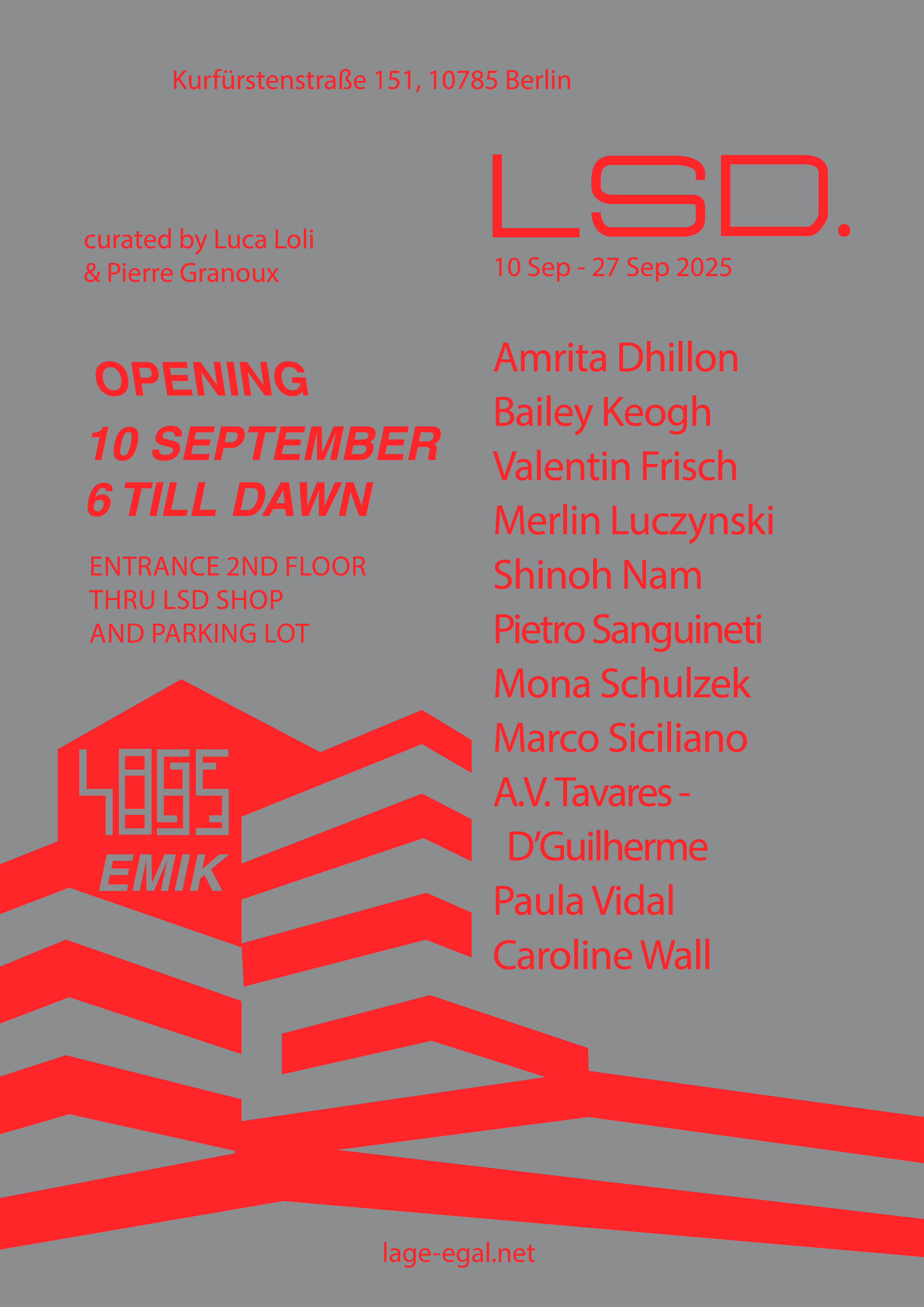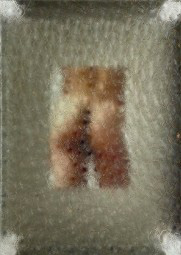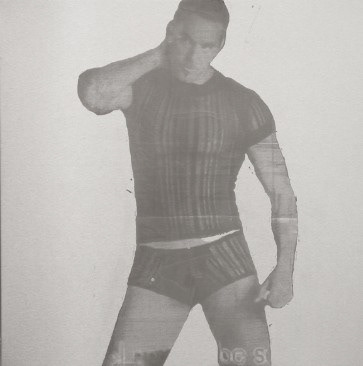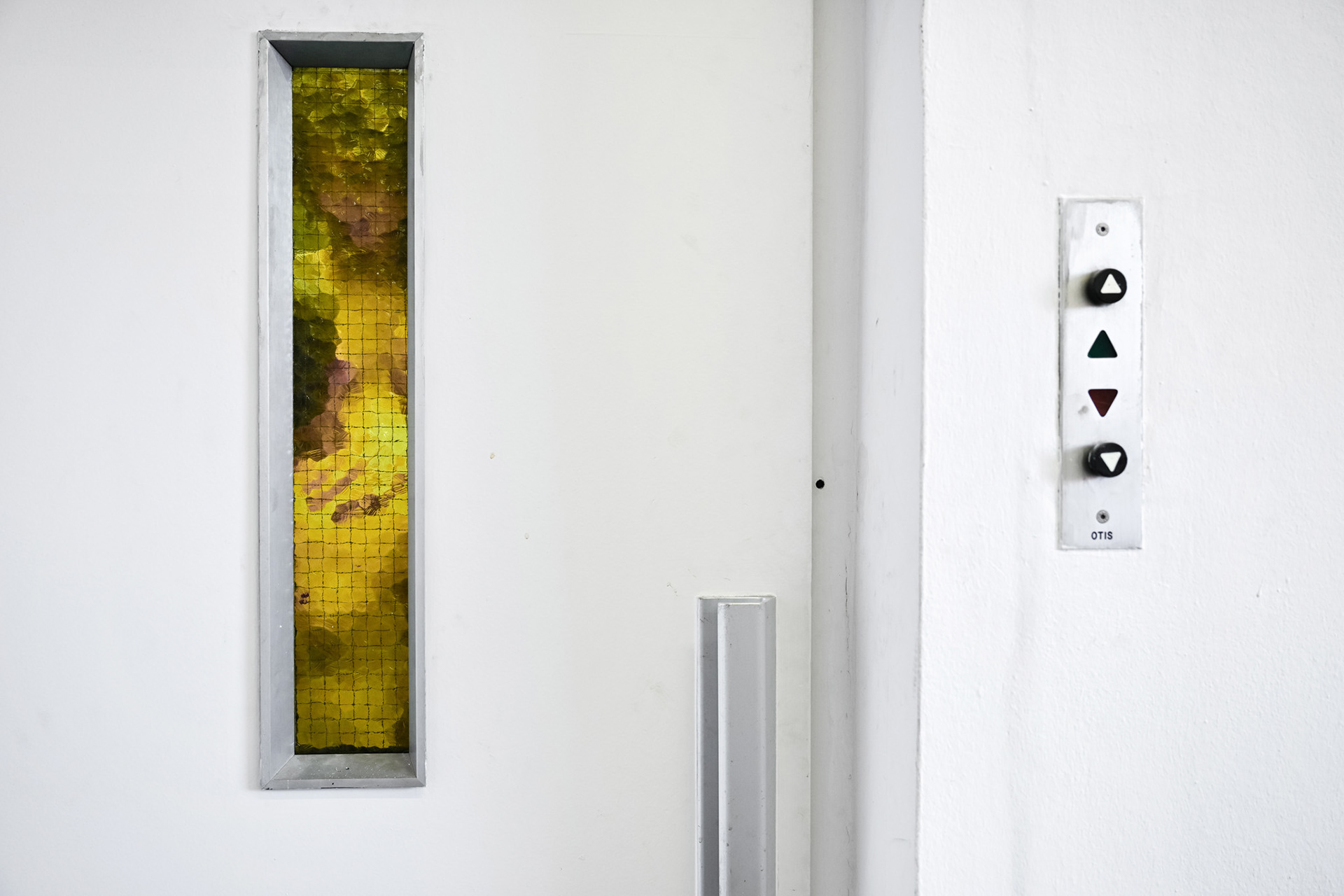

Al Varo Tavares D’Guillerme, Untitled, 2025 oil, acrylic, charcaol and spray on canvas 170 x 190 cm

Pietro Sanguineti porn, 2015 neon, Aluminum, lacquer 69 × 175 × 23 cm

Amrita Dhillon, untitled, 2025, oil on velvet, 160x40cm

Marco Siciliano Untitled, 4 2024 photograph, ornament glass embedded in a stainless steel frame. 21 x 30 x 2 cm

Bailey Koegh, XXX, boy I, 2024, acid etched stainless steel, 80 x 60cm
LSD. (Love Sex Dissonance) is a group exhibition situated above the iconic sex shop “LSD” (Love Sex Dreams), located at the corner of Kurfürstenstraße and Potsdamer Straße, a site loaded with history of erotic, *photography, sexwork and all that comes with it.
This exhibition brings together artists whose works explore eroticism as a disruptive force, one that fractures and reconfigures the ways we see, feel, and understand. Rather than presenting eroticism as a straightforward subject matter, these works treat it as a structure: something that unsettles language and image, distorts perception, and resists resolution.
Featuring painting, sculpture, sound, video, and installation, the exhibition reflects on how desire moves through systems such as architecture, memory, identity, and media.
Here, eroticism is not about clarity or comfort; it is about intensity, imagination, and the collapse of moral boundaries.
As writer and critic Susan Sontag once observed, pornography isn't just about showing sex it’s about reimagining it. In her essay The Pornographic Imagination, she argued that sexual experience becomes almost sacred in this context, not because it's realistic, but because it’s transformed. It’s not the literal body or act that matters, but the idea of how they can be altered, exaggerated, or reinterpreted through imagination.
This concept of eroticism as a space of transformation rather than simple depiction runs throughout the exhibition. Here, bodies are abstracted, surfaces become charged with symbolic meaning, and seductive imagery is made unstable and unpredictable.
These ideas take on a heightened urgency when considered alongside the real-world presence of sex workers often stationed outside venues that blur the line between fantasy and commerce, like “Love Sex Dream” cinemas and lingerie shops. In contrast to the abstracted, symbolic bodies within the exhibition, these individuals embody eroticism in its most visible and vulnerable form. Their labor exists within a system that both exploits and obscures them, where desire is commodified but the workers themselves remain marginalized. The exhibition echoes this tension: it questions how bodies real or imagined are seen, desired, controlled, and transformed within structures of power, fantasy, and representation.
Across the exhibition, desire is displaced and recomposed. In Amrita Dhillon’s paintings, pornographic and cinematic imagery are censored and softened into velvet canvases, challenging the tension between visual pleasure and emotional distance, between fetish and frame. In Bailey Keogh’s acid-etched aluminum panels, ghostly lingerie models lifted from 2000s-era LSD signage shimmer and fade, evoking nostalgia’s ability to distort and seduce, while connecting personal memory to larger political myths. Valentin Frisch transforms screenshots from gay pornography into glossy polyester cushions, tactile, masked, and anonymous, offering physical invitation while displacing erotic clarity.
Marco Siciliano’s Myopia frames photographic desire through ornamented privacy glass, embedded in bent steel. The decorated glass, often used in spaces requiring discretion, blurs the image beneath, partially redacting the figure and leaving its reconstruction to the imagination. The metal frame leaves corners exposed, offering voyeuristic glimpses while measuring the literal distance between vision and obstruction.
Shinoh Nam uses industrial materials like stainless steel, foam, wood, and MDF to build fragile architectures of intimacy, peepshow, bodies without figures, structures that seem as likely to collapse as to hold. In Paula Vidal’s site-specific inflatable installation, air becomes a sculptural element, expanding and folding into the space like a living breath, accompanied by a soundscape that turns ambient noise into a form of intimacy. Mona Schulzek connects sensuality to the cosmic, using meteorites and aluminum to speak of desire beyond the human scale, while Merlin Luczynski introduces ash, salt, and traces of DNA into ceramic vessels that become metaphors for transformation, fragility, and embodied memory.
Ál Varo Tavares d’Guilherme paints with the city in his lungs and history in his hands. From his studio perched above the LSD shop, he absorbs the street’s collisions, desire, exile, memory, violence and repaints them as raw, layered compositions. Caroline Wall works with painting, aiming to explore different states of minds and how abstraction can occur naturally in memory and dreams. The late Pietro Sanguineti reanimates language itself as erotic material, extracting loaded words from pop culture and theory and rendering them luminous, suspended, ungrounded.
Sontag, Susan. The Pornographic Imagination. In Styles of Radical Will, edited by Susan Sontag, 1967. Page 81.
* Yet long before the building became a space, it held significance in the history of photography. In the 1960s, it served as the central studio and laboratory for the Wegert brothers, a creative hub for analog photography, darkroom practices, and experimental image production. This layered legacy of visual experimentation, desire, and dissonance, continues to echo throughout the exhibition.



